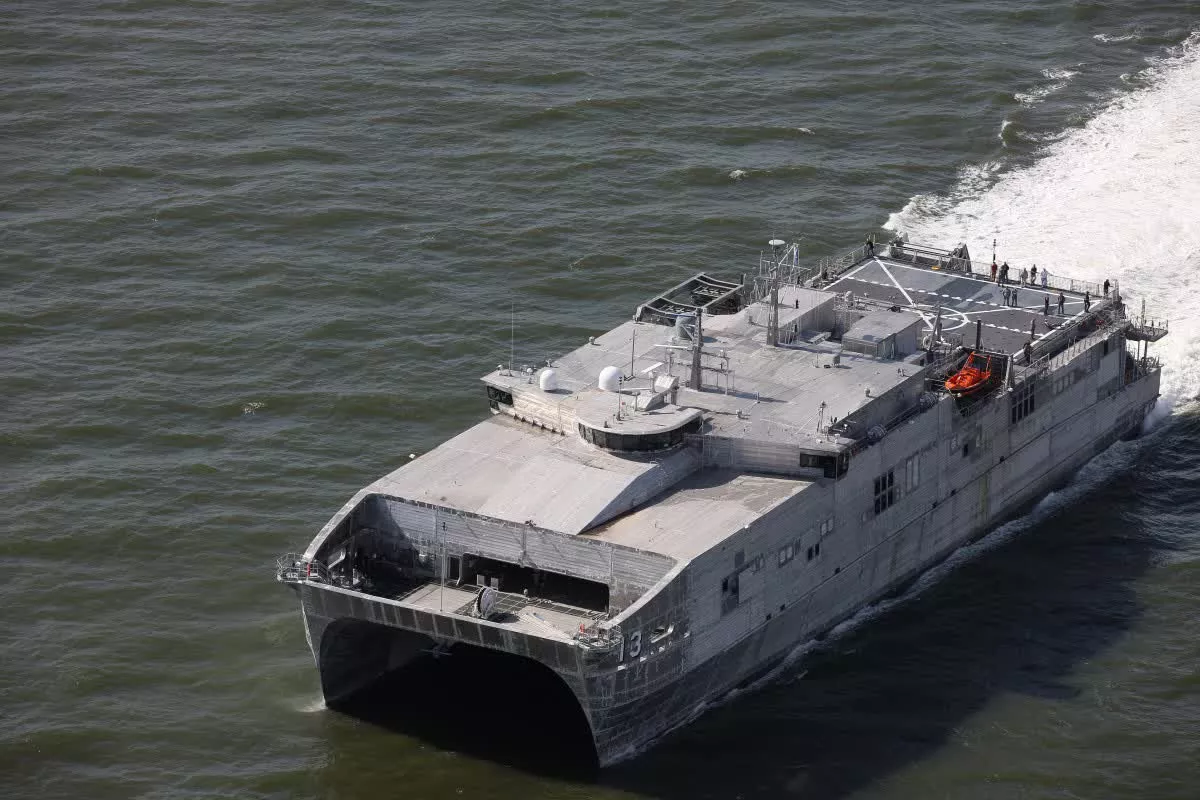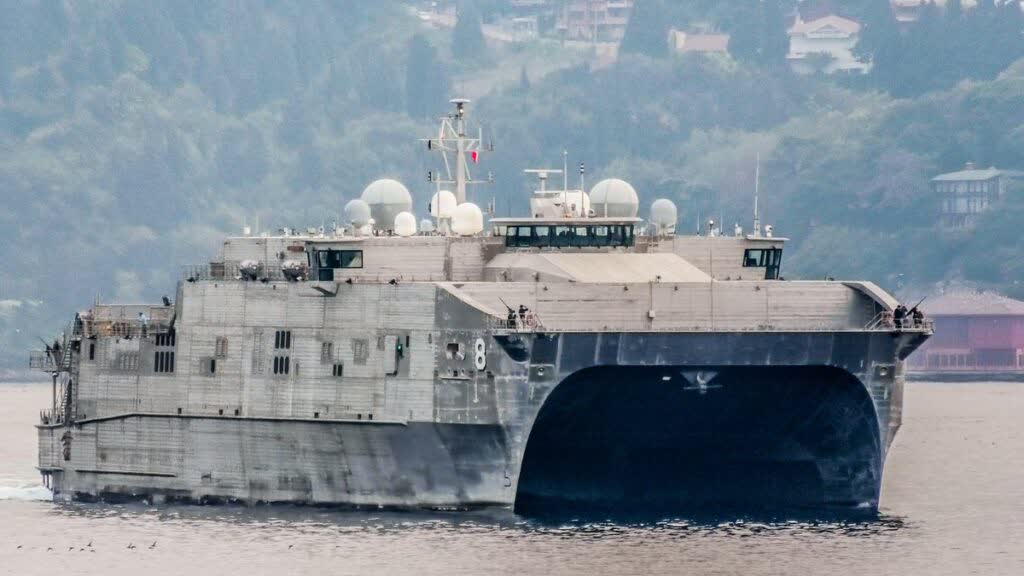What just happened? Shipbuilder Austal USA has delivered a ship to the US Navy that can operate for up to 30 days at sea without human intervention. The delivery comes after the Chief of Naval Operations said uncrewed vessels would start to play an increasingly important role within the military branch.
Austral writes that it has delivered Expeditionary Fast Transport USNS Apalachicola (EPF 13) to the United States Navy. Its 337-foot hull makes it the largest surface ship in the fleet with autonomous capabilities. This class of ship can travel at a maximum speed of 40 knots, has a maximum payload capacity of 544 metric tons, and a daft - the vertical distance between the waterline and the bottom of the hull - of just 12.5 feet, allowing it to operate in comparatively shallow waters.
The Spearhead-class Expeditionary Fast Transport ships, designed by Austal Australia, already feature automated hull and mechanical & electrical systems, but the Austal USA team added automated maintenance, health monitoring, and mission readiness to EPF 13, allowing it to operate autonomously for up to 30 days.
Austal USA writes that the key to EPF 13's autonomous capabilities is the company's highly automated in-house designed machinery control system (MCS), which allows the ship to be minimally manned by centralizing machinery operations to the bridge.
The vessel will also be the Navy's first Spearhead-class ship with enhanced capabilities to support V-22 vertical take-off and landing flight operations and launch and recover 11-metre RHIBs (rigid hull inflatable boats).
Naval Post writes that the ship could be used as an unmanned missile launch platform, ASW platform, radar/sensor carrier, or a mother ship for small drones.
Admiral Michael Gilday, Chief of Naval Operations, sang the praises of autonomous ships at the West 2023 conference in San Diego. "We're getting to the point, probably within the next four or five years, where we'll begin to deploy unmanned platforms with carrier strike groups," he said. "And the idea is that we need more ships, we need more. We need to distribute ourselves across the Pacific Ocean and across the globe [...] We can do that faster and, we think, more effectively by having a combination of manned and unmanned."
Gilday has a strategic vision of a fleet compromising 373 manned ships and 150 uncrewed vessels, along with unmanned aircraft to contribute to maritime domain awareness, submarine-hunting missions, surface strikes, and more, writes Defence News.
Those unmanned aircraft could come from Lockheed Martin, whose training jet was recently flown by an AI for 17 hours, marking the first time that artificial intelligence has been engaged in this way on a tactical aircraft.
Concerns over the use of AI in the military led to the first global Summit on Responsible Artificial Intelligence in the Military Domain (REAIM) this month, where 60 nations signed an agreement to put the responsible use of AI higher on the political agenda.


